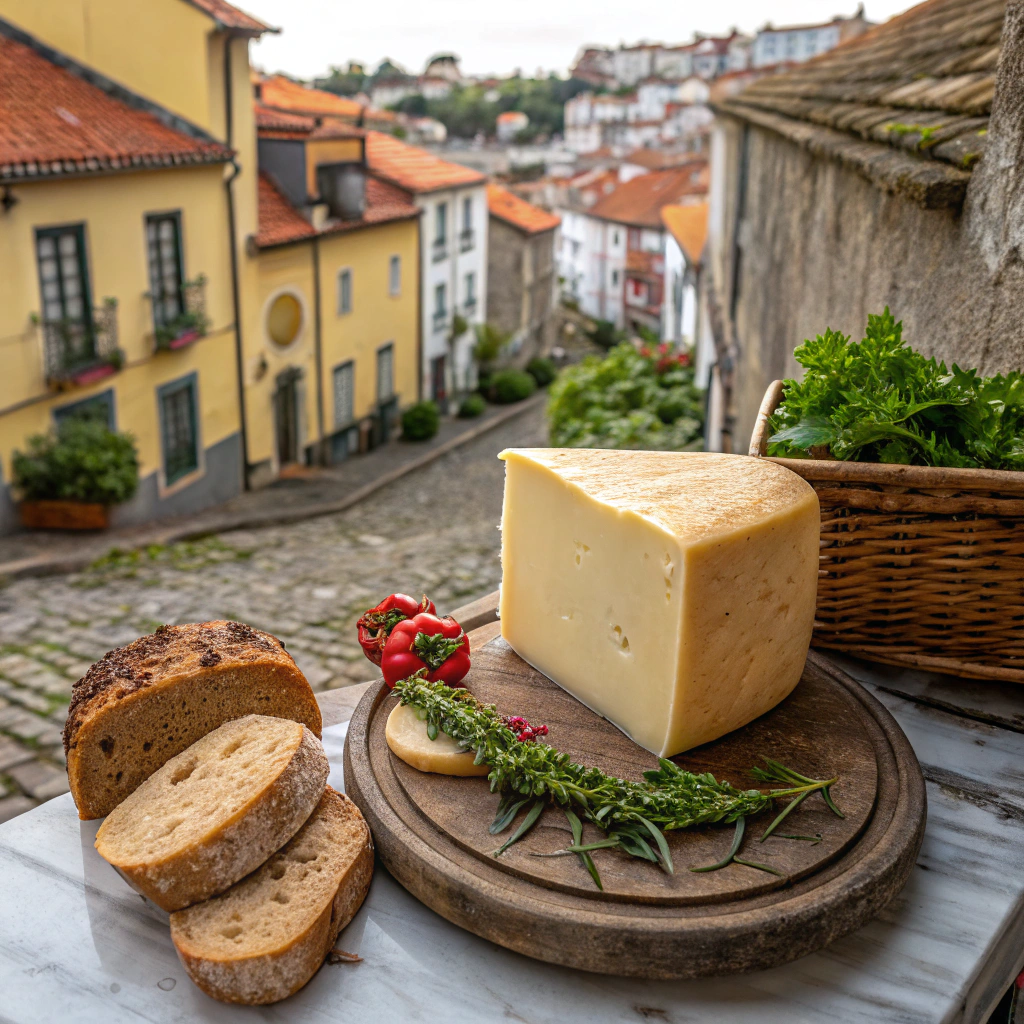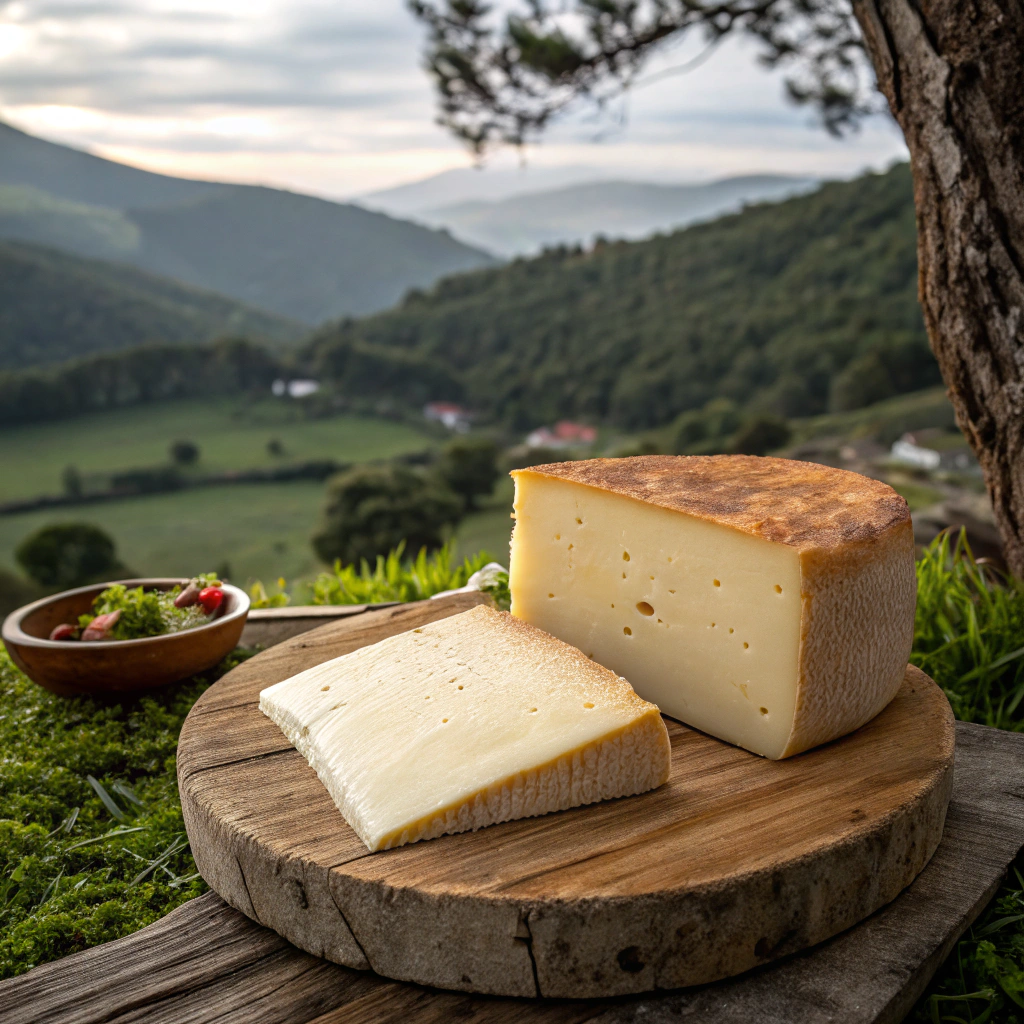The Origins and History of Cheese Azeitao in Portuguese Culinary Tradition
Nestled in the rolling hills of the Setubal Peninsula, just a short drive from Lisbon, lies the birthplace of one of Portugal’s most prized culinary treasures – cheese Azeitao. This small, creamy delicacy has been captivating cheese lovers for centuries with its distinctive flavor profile and traditional production methods. As a traveler exploring Portugal’s gastronomic landscape, understanding the origins of Azeitao cheese provides a deeper appreciation for this artisanal masterpiece.
Table of Contents
Table of Contents
The story of cheese Azeitao begins in the picturesque village that shares its name, where shepherds developed this unique cheese-making tradition as early as the 19th century. The region’s microclimate, characterized by mild temperatures and proximity to the Atlantic Ocean, creates ideal conditions for both sheep rearing and cheese production.
The Historical Development of Azeitao’s Cheesemaking Tradition
The cheesemaking tradition in the Azeitao region is deeply rooted in Portugal’s agricultural heritage. Originally, this cheese was produced by local families primarily for domestic consumption, using traditional methods passed down through generations. What makes traditional Portuguese cheese production in this region particularly special is the use of raw sheep’s milk specifically from the indigenous Churra Saloia breed.
By the early 20th century, cheese Azeitao had gained recognition beyond its local boundaries, gradually becoming one of the famous cheeses of Portugal. The cheese’s reputation grew as more travelers and food enthusiasts discovered its unique properties – the creamy texture, the slight tanginess, and the distinctive aroma that speaks to its terroir.
Protected Designation of Origin Status
In recognition of its cultural and gastronomic significance, Azeitao cheese received Protected Designation of Origin (PDO) status from the European Union in 1994. This prestigious designation ensures that only cheese produced according to strict traditional methods within the designated geographical area can bear the Azeitao name. For visitors interested in authentic food experiences, this PDO label guarantees you’re tasting the genuine article when sampling this gourmet cheese from Portugal.
The PDO regulations specify that authentic cheese Azeitao must be produced within specific municipalities in the Setubal Peninsula, including Palmela, Sesimbra, and Setubal itself. This protection has been instrumental in preserving the traditional cheesemaking knowledge while ensuring the economic sustainability of small-scale producers in the region.
The Artisanal Production Process of Genuine Cheese Azeitao
What truly sets cheese Azeitao apart is its meticulous artisanal production process. Unlike mass-produced varieties, this Portuguese cheese treasure maintains traditional methods that have remained largely unchanged for generations. For travelers interested in culinary craftsmanship, understanding this process adds another dimension to the tasting experience.
The production of authentic Azeitao begins with the careful collection of raw milk from Churra Saloia sheep, which graze on the native vegetation of the Arrabida Mountains. This specific diet imparts distinctive flavors to the milk that eventually translate to the unique taste profile of the cheese.
The Role of Cardoon Thistle in Traditional Coagulation
Perhaps the most distinctive aspect of Azeitao cheese production is the use of cardoon thistle (Cynara cardunculus) as a vegetable rennet to coagulate the milk. This natural coagulant, extracted from the purple flowers of wild thistles that grow abundantly in the region, has been used in Portuguese cheesemaking for centuries.
The use of cardoon thistle rather than animal rennet contributes significantly to the cheese’s characteristic slightly bitter notes and creamy texture. Cheesemakers carefully harvest the thistle flowers, dry them, and then create an infusion that’s added to the warmed sheep’s milk. This traditional technique requires considerable skill and experience to achieve the perfect coagulation.
Moulding, Curing and Maturation
After coagulation, the curds are delicately transferred to small circular molds where they begin to take their characteristic shape. Unlike many other cheeses, Azeitao doesn’t undergo pressing; instead, the curds naturally compact as they drain, contributing to the cheese’s soft, almost runny consistency when fully mature.
The cheeses are salted by hand and then moved to climate-controlled aging rooms where they mature for a minimum of three weeks. During this period, the rinds develop their characteristic yellowish color and slight wrinkles, while the interior transforms into the creamy paste that cheese connoisseurs cherish. The best cheese in Portugal requires patience – some producers age their Azeitao for longer periods to develop more complex flavor profiles.

Tasting Notes: The Distinctive Flavor Profile of Cheese Azeitao
For many culinary travelers, the ultimate goal is experiencing the Azeitao cheese taste firsthand. This small Portuguese cheese (typically weighing between 200-250 grams) delivers an extraordinary sensory experience that makes it a standout among European cheese varieties.
When perfectly ripened, cheese Azeitao presents a soft, yielding texture that’s often described as buttery or unctuous. Traditionally served by cutting off the top rind to create a natural bowl, the interior reveals a creamy, almost spoonable consistency that’s perfect for spreading on fresh bread or crackers.
Sensory Characteristics and Flavor Development
The flavor profile of Azeitao is complex and evolving. Initial notes are mild and buttery, followed by subtly herbaceous qualities that reflect the sheep’s diet of wild herbs and grasses from the Arrabida Mountains. As the cheese ages, it develops sharper, more piquant characteristics, though never becoming overwhelmingly strong.
What makes Azeitao especially intriguing is the slightly bitter finish – a direct result of the cardoon thistle used in production. This natural bitterness balances the rich creaminess of the sheep’s milk, creating a harmonious flavor that lingers pleasantly on the palate. The cheese’s aroma is distinctive as well, featuring earthy, grassy notes with hints of the region’s native vegetation.
Seasonal Variations in Taste and Texture
Like many artisanal products, cheese Azeitao exhibits seasonal variations that reflect changes in the sheep’s diet throughout the year. Traditionally, production was limited to the months between November and March, when the sheep were lactating. Modern techniques have extended this season somewhat, but connoisseurs often seek out traditional producers who maintain the original production calendar.
Cheeses produced in early winter often feature milder, more delicate profiles, while those made toward the end of the season when the sheep’s milk becomes richer tend to develop more robust flavors during aging. For travelers planning a gourmet cheese from Portugal expedition, these seasonal nuances provide an opportunity to experience different expressions of the same traditional cheese.
Exploring the Azeitao Region: A Cheese Lover’s Travel Guide
The Azeitao region offers much more than just exceptional cheese – it represents an opportunity for immersive food tourism where visitors can explore the landscape, culture, and traditions that give rise to this culinary treasure. Located approximately 40 kilometers south of Lisbon, the area makes for an ideal day trip or weekend excursion for travelers based in Portugal’s capital.
The region’s gently rolling hills, protected natural areas, and charming villages create a picturesque backdrop for culinary exploration. For those interested in visiting cheese farms near Lisbon, the Azeitao area offers several options where visitors can witness traditional production methods firsthand and sample cheeses at various stages of maturation.
How to Get to Azeitao from Lisbon
Reaching Azeitao from Lisbon is straightforward, making it accessible for most travelers:
By Car: The most flexible option, taking approximately 40 minutes via the A2 highway and then following signs to Azeitao. This option allows you to explore multiple cheese producers and nearby attractions at your own pace.
By Public Transport: Regular buses connect Lisbon to Setubal, from where you can take local buses to Azeitao. While less convenient than driving, this option is environmentally friendly and eliminates parking concerns.
Organized Tours: Several tour operators in Lisbon offer food and wine tours that include visits to Azeitao cheese producers, often combined with wine tastings at local vineyards. This can be an excellent option for travelers seeking a comprehensive and educational experience.
When to Visit for the Best Cheese Experience
For travelers specifically interested in cheese Azeitao, timing your visit can significantly enhance your experience:
Winter to early spring (November to April) represents the traditional production season, when you’re most likely to witness active cheese production.
Many producers offer more extensive visiting hours and tasting options during the Portuguese tourist season (May to September), though the cheese available will typically be from the previous production season.
The annual Cheese Festival in Azeitao, usually held in March, celebrates local cheese traditions with tastings, demonstrations, and cultural events – making it an ideal time for serious cheese enthusiasts to visit.
Best Cheese Farms and Tasting Rooms to Visit in Azeitao
For travelers seeking authentic traditional Portuguese cheese tasting experiences, several producers in the Azeitao region welcome visitors for tours and tastings. These visits offer invaluable insights into traditional production methods while supporting the small-scale artisans who maintain this culinary heritage.
While many small producers operate in the region, the following establishments consistently receive positive reviews from culinary travelers for their visitor experiences and high-quality cheese Azeitao:
Fernando & Simões
This family-operated cheese farm has been producing Azeitao cheese for over three generations and offers visitors an intimate look at traditional production methods. Their guided tours take you through the entire cheese-making process, from meeting the sheep to witnessing coagulation and aging techniques.
Visitors particularly appreciate the personal touch here – tours are often conducted by family members who share stories and insights passed down through generations. The tasting experience includes cheeses at different maturation stages, allowing guests to understand how flavors develop over time.
Advanced booking is recommended, especially during high season, as this authentic producer maintains small group sizes to ensure a quality experience.
Quinta do Anjo Agricultural Cooperative
For a more comprehensive understanding of regional production, the cooperative in Quinta do Anjo offers an excellent overview of how multiple local producers work together to maintain quality standards and traditional methods. Their visitor center provides educational displays about the history and cultural significance of cheese Azeitao.
The cooperative’s tasting room features cheeses from several local producers, making it an ideal spot to compare different interpretations of traditional techniques. Their knowledgeable staff can guide visitors through tasting notes and explain the subtle differences between producers.
As an added convenience, the cooperative offers shipping services for international visitors who wish to purchase cheese to take home (subject to customs regulations of your destination country).
Pairing Cheese Azeitao with Portuguese Wines and Other Local Products
No exploration of cheese Azeitao would be complete without considering the traditional accompaniments that enhance its distinctive flavor profile. For travelers seeking to experience this cheese as locals do, understanding traditional pairings provides a more authentic and satisfying culinary adventure.
Azeitao cheese and wine pairing represents a particularly important aspect of Portuguese gastronomy, with regional wines often developed alongside local cheeses to create complementary flavor experiences.
Ideal Wine Pairings for Azeitao Cheese
The Setubal Peninsula, home to cheese Azeitao, is also renowned for its distinctive wines, creating natural pairing opportunities:
Moscatel de Setubal: This fortified sweet wine from the same region provides a contrasting sweetness that beautifully balances the slightly bitter notes in the cheese. The amber-colored dessert wine, with its notes of orange blossom, caramel, and nuts, creates a classic regional pairing.
Vinho Tinto da Peninsula de Setubal: The region’s red wines, particularly those from the Castelão grape, offer medium-bodied options with sufficient acidity to complement the creamy texture of Azeitao. These wines typically feature red fruit notes and subtle earthiness that harmonize with the cheese’s flavor profile.
Portuguese White Wines: From nearby regions, aromatic white wines with good acidity such as Arinto or Antão Vaz varieties provide refreshing contrasts to the richness of the cheese.
For visitors planning traditional Portuguese cheese tasting sessions, many local wineries offer combined cheese and wine experiences that showcase these classic pairings in their optimal setting.
Traditional Accompaniments and Serving Suggestions
Beyond wine, cheese Azeitao is traditionally enjoyed with several local accompaniments:
Fresh Portuguese bread, particularly the regional pão de Mafra with its crunchy crust and soft interior, provides the ideal vehicle for enjoying the creamy cheese.
Quince paste (marmelada) offers a sweet contrast that brings out different dimensions in the cheese’s flavor profile.
Local honey, especially varieties from the Arrabida Natural Park where many of the sheep graze, creates a delightful sweet-savory combination.
Black olives from the region provide a salty counterpoint that enhances the cheese’s creaminess.
Traditionally, Azeitao is served by cutting off the top of the cheese to create a natural container, then scooping out the creamy interior with a small spoon or spreading it on bread. This serving method highlights the cheese’s distinctive texture while preserving the flavorful rind.

Crafting a Culinary Itinerary: Azeitao Cheese Trail Near Lisbon
For travelers looking to immerse themselves in Portugal’s cheese culture, creating a dedicated cheese trail centered around Azeitao offers a rewarding culinary adventure. This approach allows visitors to explore both the cheese itself and the broader cultural and geographical context that shapes its character.
The proximity to Lisbon makes it possible to experience the best cheese in Portugal while using the capital as a comfortable base. Alternatively, staying in the charming towns of the Setubal Peninsula allows for a more immersive experience in this gastronomic region.
One-Day Azeitao Cheese Experience from Lisbon
For travelers with limited time, a well-planned day trip from Lisbon can provide a satisfying introduction to cheese Azeitao:
Morning: Depart Lisbon by 9:00 AM, heading south to arrive at your first cheese producer by 10:00 AM. Fernando & Simões or a similar traditional producer offers morning tours when you can observe the cheese-making process in action.
Midday: After your first cheese encounter, enjoy lunch at a local restaurant in Vila Fresca de Azeitao or Vila Nogueira de Azeitao where you can sample regional specialties often featuring the local cheese in traditional recipes.
Early Afternoon: Visit a second producer with a different approach or scale of production to understand the variations within the PDO regulations. The Agricultural Cooperative provides an excellent contrasting perspective.
Late Afternoon: Complete your cheese journey with a visit to a local winery such as José Maria da Fonseca or Bacalhôa, where you can enjoy Azeitao cheese and wine pairing sessions in historic settings.
Evening: Return to Lisbon with your purchased cheeses and wines for further enjoyment during your stay in Portugal.
Weekend Cheese and Culinary Immersion
For those with more time to dedicate to exploring Portuguese cheese travel guide opportunities, a weekend itinerary allows for a deeper dive into the region’s culinary traditions:
Day 1:
- Morning: Travel from Lisbon to Azeitao, checking into accommodation in the area
- Midday: Visit a traditional cheese producer for your first tasting experience
- Afternoon: Explore the charming streets of Vila Nogueira de Azeitao, including a visit to the famous tiled fountain and historic architecture
- Evening: Dinner at a traditional restaurant featuring regional specialties and local wines
Day 2:
- Morning: Visit the Livramento Market in Setubal, where multiple cheese vendors offer varieties of Azeitao and other regional cheeses
- Midday: Enjoy a seafood lunch in Setubal, experiencing how locals pair cheese with the region’s famous fresh seafood
- Afternoon: Visit a second cheese producer or join a workshop where you can participate in the cheese-making process
- Evening: Farewell dinner featuring a comprehensive cheese board of regional varieties
Beyond Azeitao: Discovering Other Notable Portuguese Cheeses
While cheese Azeitao rightfully deserves its place among the famous cheeses of Portugal, the country offers a remarkable diversity of traditional cheeses that tell the story of different regions, climates, and cultural influences. For the dedicated cheese enthusiast, exploring these variations provides a more complete picture of Portugal’s cheese heritage.
Many of these cheeses complement Azeitao in a traditional Portuguese cheese tasting, offering contrasting textures, milk sources, and production techniques that showcase the country’s diverse cheese-making traditions.
Portugal’s Other PDO Cheeses Worth Discovering
Serra da Estrela: Often considered the king of Portuguese cheeses, this soft sheep’s milk cheese from Portugal’s highest mountain range shares some production techniques with Azeitao, including the use of cardoon thistle. However, its higher altitude origin creates distinctive flavor notes.
Queijo de Évora: From the Alentejo region, this firm sheep’s milk cheese offers a completely different texture and flavor profile compared to Azeitao, with more pronounced peppery notes and a firmer texture.
Queijo do Pico: Representing Portugal’s volcanic Azores islands, this cow’s milk cheese brings a completely different dimension to a Portuguese cheese board with its semi-hard texture and slight smokiness.
Queijo de Nisa: Another treasure from the Alentejo, this semi-hard sheep’s milk cheese offers nutty flavors and a firm texture that contrasts beautifully with the creaminess of Azeitao.
Queijo Rabaçal: This mixed milk cheese (goat and sheep) from central Portugal provides yet another dimension with its distinctive herbaceous qualities derived from the specific vegetation in its production region.

Planning a Comprehensive Portuguese Cheese Tour
For dedicated cheese enthusiasts, Portugal offers the possibility of a cheese-focused travel itinerary that extends beyond the Azeitao region:
Central Portugal: After experiencing Azeitao, travelers can head north to the Serra da Estrela mountains to taste Portugal’s most famous cheese in its homeland.
Alentejo Region: Further east, the historic city of Évora serves as an excellent base for exploring the distinctive sheep’s milk cheeses of this region, including Évora, Nisa, and Serpa varieties.
Northern Delights: The north offers yet more variety with cheeses like Terrincho from Trás-os-Montes showcasing different regional traditions.
For international visitors, these different cheese regions align well with Portugal’s major wine regions, making it possible to create combined cheese and wine touring itineraries that showcase the country’s gastronomic diversity while experiencing its varied landscapes and cultural heritage.
FAQ: Everything You Need to Know About Cheese Azeitao
What makes Azeitao cheese different from other Portuguese cheeses?
Cheese Azeitao stands apart due to its unique combination of raw sheep’s milk from the Churra Saloia breed and the use of cardoon thistle as a natural coagulant. This creates its distinctive creamy, slightly runny texture and complex flavor profile with subtle bitter notes. Unlike firmer Portuguese cheeses, Azeitao is typically served by removing the top rind and scooping the creamy interior. Its PDO status ensures that only cheese produced in the specific region using traditional methods can bear the Azeitao name, preserving its authenticity and unique character among Portugal’s diverse cheese offerings.
When is the best time of year to taste cheese Azeitao in Portugal?
The traditional production season for cheese Azeitao runs from November through March, coinciding with the natural lactation period of the sheep. Cheeses produced early in this season tend to be milder, while those from late winter develop more robust flavors. For the most authentic experience, visiting between January and April allows you to taste freshly produced cheese at its optimal ripeness. However, properly aged Azeitao is available year-round from quality producers and shops. The annual Azeitao Cheese Festival in March offers an exceptional opportunity to sample varieties from multiple producers and participate in guided tastings.
Can I bring cheese Azeitao back to my home country?
Bringing cheese Azeitao back from your Portuguese travels depends on your destination country’s importation regulations. For European Union residents, transporting PDO cheeses between member states is generally permitted. However, travelers returning to countries like the USA, Canada, or Australia face stricter regulations regarding raw milk cheese importation. Some producers offer vacuum-sealed versions that travel better, but they may not fully capture the delicate texture of freshly cut Azeitao. As regulations change frequently, check your home country’s current food importation rules before purchasing. Alternatively, specialist cheese shops in major cities worldwide occasionally import authentic Azeitao, though at premium prices.
How should cheese Azeitao be stored and served for the best experience?
For optimal enjoyment, store cheese Azeitao in its original wrapper or wax paper in the refrigerator’s vegetable compartment (the least cold section, ideally 8-10°C/46-50°F). Remove it 1-2 hours before serving to reach room temperature, which allows its complex flavors and creamy texture to fully develop. The traditional serving method involves cutting off the top rind to create a natural bowl, then scooping the creamy interior with a small spoon onto fresh bread or crackers. Pair with regional wines like Moscatel de Setúbal or medium-bodied reds from the Peninsula de Setúbal. Once opened, consume within 2-3 days for the best flavor experience.
Are there any vegetarian alternatives to traditional cheese Azeitao?
Interestingly, despite being made with animal milk, cheese Azeitao is suitable for many vegetarians because it uses cardoon thistle (Cynara cardunculus) as a coagulant instead of animal rennet. This plant-based coagulant has been used in Portuguese cheesemaking for centuries and contributes to Azeitao’s distinctive flavor profile. However, strict vegans would still avoid it due to the sheep’s milk content. Some artisanal cheesemakers in Portugal are experimenting with plant-based alternatives inspired by traditional recipes, though these cannot legally be called “Azeitao” under PDO regulations. When visiting, inquire specifically about the coagulation method if vegetarian concerns are important to you.
How does cheese Azeitao compare to similar soft cheeses from France or Italy?
Cheese Azeitao shares characteristics with certain European soft cheeses but remains distinctively Portuguese. While comparable to France’s Époisses or Camembert in creaminess, Azeitao differs through its sheep’s milk base and the distinctive slightly bitter finish from cardoon thistle coagulation. Unlike Italy’s Robiola, which can incorporate cow’s milk, authentic Azeitao uses only sheep’s milk from a specific breed. The terroir of the Arrabida region imparts unique herbaceous notes absent in other European cheeses. Azeitao’s serving style—cutting off the top and scooping out the interior—resembles how traditional Vacherin Mont d’Or is enjoyed, but Azeitao typically has a more pronounced flavor complexity despite its smaller size and younger age.
Conclusion: Embracing Cheese Azeitao as Part of Your Portuguese Travel Experience
A journey through Portugal’s culinary landscape remains incomplete without encountering cheese Azeitao – a small but significant symbol of the country’s dedication to preserving traditional food production methods. This creamy treasure, barely larger than the palm of your hand, tells a story of regional identity, cultural heritage, and artisanal craftsmanship that has endured through generations.
For travelers seeking authentic gastronomic experiences, making time for cheese Azeitao during your Portuguese itinerary offers rewards that extend beyond mere taste. The journey to the source of this traditional delicacy provides opportunities to explore the picturesque Setubal Peninsula, interact with dedicated artisans, and understand the deep connection between land, animal, and food that defines Portugal’s best culinary traditions.
Whether you’re a dedicated cheese connoisseur or simply a curious traveler seeking to understand Portuguese culture through its food, Azeitao offers an accessible entry point into the country’s rich culinary heritage. The proximity to Lisbon makes it particularly convenient to incorporate into even a brief visit to Portugal, while the connections to local wines, breads, and other traditional products create a comprehensive gastronomic experience.
As you plan your Portuguese adventure, consider allocating time to discover this small but significant cheese. Whether through a dedicated day trip, a weekend exploration, or as part of a broader culinary tour, cheese Azeitao provides delicious insights into Portugal’s soul – one creamy, flavorful spoonful at a time.



